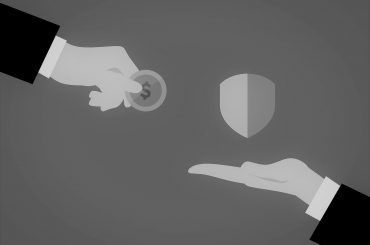Drug recall is a nightmare for any pharma company. The number of drug recalls issued by manufacturers is reaching an all-time high. For instance, pharmaceutical recalls rose 52% in Q1 2018 – this increase made the same quarter the highest in
It takes 10-17 years to bring a drug to market successfully. The loss to a pharma company due to a single drug recall is colossal. Drug recalls not only result in financial loss for the producing company, but they also cause damage to the company’s reputation. The actual recall is not even the most costly aspect of drug recalls for most of the pharmaceutical companies.
Blockchain for drug supply chain could bring an end to all the major drug recall problems. Use of blockchain across the pharma supply chain can mitigate the number of inefficient and faulty drugs reaching the market, making the drug development process more trustworthy and error-free, ultimately reducing the drug recall numbers.
Drug Recalling
The average cost to develop and gain approval of a new drug is $2.558 billion.Tufts Center for the Study of Drug Development
Definition
A drug recall is an action taken by a pharmaceutical manufacturer or distributor to remove a product from the market. In most cases, companies initiate a voluntary recall after discovering potential problems that are in violation of the law. In other cases, the FDA recognizes the problem and requests that the company recall the product. If the company does not comply, the FDA may pursue regulatory action to have the product seized.
Recalls may occur at the consumer, retail or wholesale level. A consumer-level recall – which includes individual patients, physicians and hospitals – are the ones we hear about most often, and may require action on the part of the consumer. Retail-level recalls are directed at retailers and providers. Wholesale-level recalls involve distribution between the manufacturer and retailer.
Classification
Drug recalls are classified in the US by the FDA into three different categories:
- Class I – Class I recalls are the most serious recalls. The FDA issues Class I recalls when there is a defect with a drug – due to contamination of raw materials or labeling that could lead to serious health problems or even death.
- Class II – FDA issues Class II recalls when exposure to the drug may cause a temporary or medically reversible health problem or has a slight chance of a serious problem.
- Class III – FDA issues Class III recalls for products that violate FDA regulations. For example, a bottle that doesn’t contain the number of pills stated on the label – but are unlikely to cause adverse health consequences.
You may also like: Forecasting Blockchain’s impact on SMEs in the Coming Five Years
Causes of Drug Recall
Hazardous to Health
The risks associated with some medicines become evident only after their widespread use. For example, according to WebMD, initial tests on phenylpropanolamine, a once-popular ingredient in weight loss drugs and decongestants, did not uncover the fact that it caused hemorrhages in the brain. If the FDA receives reports that a medication causes unexpected side effects, it will issue a recall.
Mislabeling
Sometimes the instructions on a medication label are unclear or misleading, which can lead to an overdose, under-dose or other adverse effects. If the FDA receives reports that patients are taking a drug incorrectly due to insufficient instructions, it will recall the medication.
Contamination
There are several steps in the process of producing a medication and delivering it to patients. Therefore, there are plenty of opportunities for a drug to become contaminated. Often, another pharmaceutical ingredient contaminates a medication which may or may not cause adverse reactions.
Mismatched Drugs
Though rare, the medication inside a drug package sometimes is not the correct medication.
Manufacturing Defects
Mistakes during the manufacturing process of a drug could affect its purity, quality, and potency. In turn, the drug does not actually help patients and causes health issues for the consumer.
Blockchain in Drug Recalling
The major causes for a drug recall include failed specifications, mislabeling and contamination. Blockchain can act as a preventive measure for drug recalls. In case of inevitable recalls blockchain can facilitate targeted recalls.
Solution for Mislabeling
Labeling is a critical procedure for maintaining compliance, ensuring brand consistency, improving operational efficiency, and supporting business growth. Legacy labeling solutions maintain offline data sources often relying on manual data entry or uses individual productivity tools like spreadsheets.
Mislabeling is the cause of 14.3% of all the pharmaceutical recalls.
FDA
Blockchain can help in overcoming local labeling inefficiencies. It enables the dichotomy of privacy and transparency to coexist. A permissioned ledger stores critical drug information protecting it from attackers. The authenticated parties will get access to this ledger.
The distributed ledger technology of blockchain enables all manufacturing sites to have the replica of critical drug information required for labeling. There is no need to manually extract the data from a traditional database system. The information is available in real-time, in a consistent and recurring format.
Suggested Reading: Understanding blockchain, its scalability issues, and solution
It preserves the brand image and the labeling is regular across all the manufacturing sites, worldwide.
The data available on this distributed ledger has been verified by a trusted authority at every stage of the drug development process. Thus, adopting blockchain eliminates the case of labeling a drug with false or misleading information. With blockchain, FDA can directly monitor the labeling process.
Solution for Failed Specifications
Poor-quality medicines can reach the market through substandard production of legitimate drugs because of inadequate quality-control processes during manufacturing.
Blockchain can tackle this issue by providing visibility at all points across the pharma supply chain.
Blockchain achieves this visibility by tagging drugs with unique barcodes. These barcodes are scanned and their records are kept on a blockchain in secure digital blocks. These records will be updated in real-time as the drugs are transferred from one entity to the other in the supply chain. Parties with authorized access can check the records anytime. This mechanism of tagging the drugs to trace and track them is known as serialization.
This security architecture verifies every input and output from all the stages of drug development, with progress to next stage dependent on whether it meets the required standards of drug efficacy, efficiency, product specification, substance specification,
Thanks to multi-party computation, all the stakeholders can validate the results of clinical trials and hence assure all drug specifications are correct. Also, it ensures that CGMP (Current Good Manufacturing Practice) regulations are met to assure drug quality.
Blockchain technology allows to identify faulty drugs at the very early stages of development. It safeguards the manufacturer from all the problems that it would have to deal with, if a faulty drug reached the market.
If a
Suggested: “An Affair of Two Chains: Blockchain Meets Supply Chain Finance“
Targeted recalls
Although blockchain is an excellent preventive measure for drug recalls, some recall cases are inevitable. These cases are discussed below.
1. Only after widespread use do the risks associated with some medicines become evident.
2. Manufacturers may recall some drugs which are contaminated on their way from the manufacturer to the retailer.
3. Cold Chain Inefficacy- If a portion of a lot of a drug had been stored at a temperature that compromised the chemical composition of the drug.
4. Manufacturers may recall an FDA approved drug due to the FDA’s regulations and policies revisions.
Learn how we overcame these issues for a pharma company by clicking here.
Serialization
It helps manufacturers issue targeted recalls of individual packages of the contaminated products. The manufacturer could issue a recall for only the affected items based on the visibility of the status and movement of each individual unit’s unique serial number. Thus, targeted recalls enable manufacturers to recall specific units of a product instead of a broad, excessive amount.
Conclusion
Blockchain holds immense potential as a unified solution for efficient and secure management of pharmaceutical supply chains around the globe. A major benefit of blockchain, and perhaps the most important for the pharmaceutical industry is that it provides end-to-end visibility. Drug recall is a severe issue in the pharma industry and the number of deaths related to this issue has been increasing in recent years. Blockchain can reduce the rate of drug recalls due to mislabeling and failed specifications. It also helps in issuing targeted recalls of the affected drugs instead of the whole lot.
To learn more about how blockchain can transform the drug supply chain, drop your email address here and get a free consultation.






1 Comment
Thank you for this very well written article. The drug supply chain is one of innumerable use cases for blockchain technology in the healthcare space. I believe that blockchain technology will revolutionize healthcare as we know it…in a good way !!!